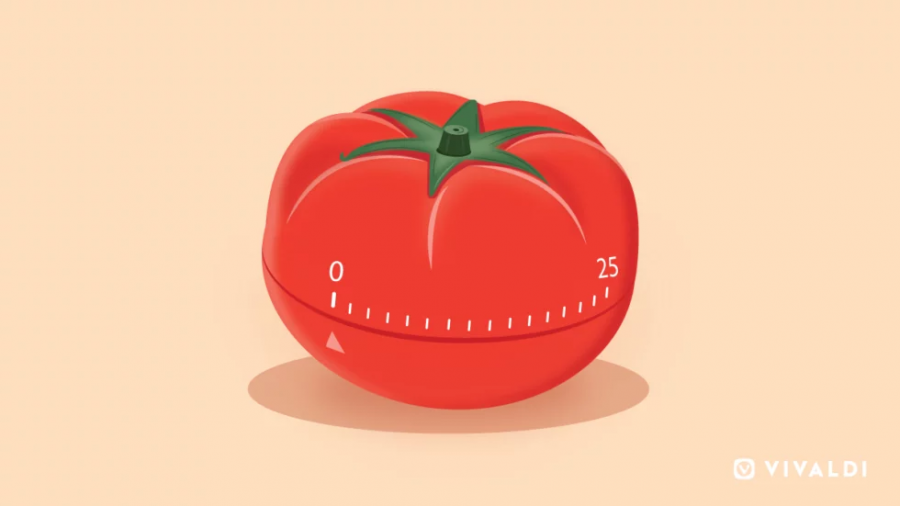Quick Takeaways from Workshop #2
Do you find yourself being distracted while doing your schoolwork? Do you say that you are going to do your English homework, but end up folding your laundry, watching study videos or YouTube, and texting your friends an hour later? If so, Mrs. Kris has the solution for you! On Wednesday, January 13, Mrs. Kris held the second workshop in her Habits of Mind workshop series. The topic of this week’s workshop was Focus Power!: Tips for Getting Started and Staying Motivated (Even During a Pandemic), which is especially helpful for staying concentrated and motivated during this pandemic and new year of 2021.
Focus is the ability to hone into one thing and is especially important to learning. Focus is actually one of the human brain’s executive functions. Here are some quick takeaways from Mrs. Kris’ workshop about the power of focus.
- You Can Train Your Prefrontal Cortex to Focus
Our brain has two modes of thinking: focus mode and diffuse mode. Focus mode is like walking on a trail. We concentrate on following the path of the trail so that we do not get lost. Focus mode is when we are in the zone, concentrating, and working through our tasks. Focus mode is vital to learning and deep work. However, our brains cannot stay in focus mode forever and they should not. This is where diffuse mode comes into play. Diffuse mode is like walking through a meadow. In diffuse mode, our minds wander. In our society, we restrict our diffuse mode and barely allow ourselves to go into diffuse mode. We think that if we are not working, then we are not being productive. But diffuse mode is vital for creativity and for making connections. After being in focus mode for a while, our brains need time to move what we just learned from short-term memory to long-term memory. In other words, our brains need rest time to consolidate our knowledge.
- Daydreaming is Good for Learning
Daydreaming is a form of diffuse mode, along with taking a shower, walking, driving, and meditating. Diffuse mode is when you are not concentrating on anything and are just letting your mind rest. When you daydream, your mind begins to make connections with the topic that you just learned, helping that topic stick in your brain better. Diffuse mode is also why your thoughts sometimes roam when you try to sleep. It’s because you have been in focus mode and have not given your brain enough time to rest, so when you get in bed and relax, your brain goes into diffuse mode and begins to wander. That’s also why you sometimes get the best ideas when you are in the shower.
- Multitasking is a Myth
Your brain is a muscle: focus strengthens it, distraction weakens it. Multitasking is against our brain’s natural structure. Our brains are designed to focus on one task that requires our full concentration at a time. Even though I can walk while talking on the phone, a baby cannot do that. Both walking and talking are functions that I don’t require concentration to do, but a baby needs focus to do. However, I cannot text my friends and get my homework done at the same time to the best of my abilities. This is because our brain does not multitask; it toggles between tasks. Every time you redirect your attention, you drain your brain, making it even harder to get your tasks done. The topic of multitasking also connects to the question of whether music should or should not be allowed while studying. The studies on music during studying show that music while studying is fine, but music with lyrics distracts if you are doing a verbal task and music that is too loud conflicts with attention. When listening to music while studying, try to find music that does not distract you or make you sing along.
On the other hand, unitasking is doing one thing at a time. It is very revolutionary since it is something that not many people do. I will talk about unitasking more when I discuss the Pomodoro Method.
- Anxiety is a Brain Drain
Lastly, when we have a pressing assignment to do, we tend to avoid doing the assignment or procrastinate because we fear the assignment or feel anxious about it. This avoidance of assignments feeds anxiety and takes more mental energy than just getting an assignment done.
Now, connecting all the takeaways together, I present the Pomodoro Method, the hopeful solution to your distractions. The Pomodoro Method was created in the 1990s by Francesco Cirillo, a university student. He named the system the “Pomodoro” after the tomato-shaped timer he used during his university days. The Pomodoro Method helps break down large tasks or series of tasks into small sessions called pomodoros that are spaced out with breaks. Since the brain has a limited attention span, these pomodoros are perfect for getting work down since one pomodoro is only 25 minutes long. The Pomodoro Method promotes focused unitasking and minimizes distractions. The steps in the Pomodoro Method are very simple.
- Choose a task to concentrate on or accomplish.
- Set a timer for 25 minutes. 25 minutes is a great amount of time since it is a small enough interval of time that it hijacks your brain’s anxiety center and tempts your brain into trying a pomodoro. There are also many apps that you can use to do the Pomodoro Method. I use Forest (it costs $1.99), but 30/30, Tomato Timer, Focus Plant, and Flora are free.
- Work on the task until the timer goes off.
- Take a quick 5 minute break. Make sure to get and move or do some stretches. Grab something to eat or refill your water.
- After 4 pomodoro cycles in total, take a 20 minute break.
- Repeat until you have finished your task.
Lastly, here are three tips that Mrs. Kris suggests for staying motivated.
- Keep the Big Picture in Front of You
Some examples of how to imagine the big picture are to make a vision board, have words of the year (mine are confidence, positivity, and responsibility), and write down your goals for the year. Doing this helps keep you connected to something bigger and helps you connect to your future self. For example, I try to do my homework due Thursday when it is assigned to me on Monday because I know future me will be happy and relieved that I did my work then. Keeping the big picture in front of you helps you save for the future, delay gratification, and make more well-considered decisions. In other words, your future self will thank you.
- Focus on What You Do Like About a Task
This can be used for an assignment. Say for example, I have a history quiz coming up and I don’t really want to study for it. But I love using Quizlet so I make a quizlet and study from the quizlet. In this case, I focused on what I like doing in studying for the quiz: using Quizlet. Other examples of focusing on what you like include using picture notes, listening to study music while studying, or writing notes in a purple pen if your favorite color is purple.
- Find Effective Rewards (a little extrinsic motivation is just fine)
Intrinsic motivation is motivation that comes from inside of you and in the long run is more powerful. Extrinsic motivation is still good to you since it gives you external motivators such as little rewards. After completing an assignment, reward yourself by giving yourself a sticker, reading your favorite book, or eating your favorite food. The reward should be something that is small but fun, satisfying but doesn’t take too much time.
Just remember, when trying out any of these tips or methods to be gentle with yourself. These tips shouldn’t be a burden, you are only trying something out. But if you do enjoy the tips and methods, make sure to keep them going so that you can build a habit (no pressure through)! Make sure to attend Mrs. Kris’ next workshop on Wednesday January 20 about It’s About Time: Strategies for Working Smarter, Not Harder (& Finding Time for Joy).
Neha Sunkara ‘21, Food & Wellness Editor











